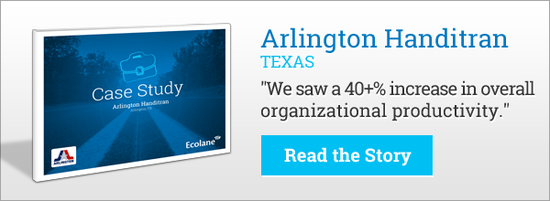As we’ve discussed in previous posts, funding plays an integral role in the success of public transit operations, especially for rural transit providers. The Department of Transportation (DOT) and the Federal Transit Administration (FTA) work to ensure that all segments of the population, regardless of social class, education level or employment status, deserve equal access to safe and affordable transportation services to get to and from work, home, school, shopping, medical appointments, and all other fundamental activities. To achieve this, the DOT and FTA offer various States, metropolitan, rural, and local grant programs and opportunities to help create more mobile and connected communities.
Now, although there are several types of grants available, such as foundation, operating, and capital grants, not all transit agencies and providers qualify for every funding opportunity that is announced. Meaning, it’s very important for agencies seeking viable funding opportunities to put a plan in place that works to make their agency’s application stand out from the rest. To make a compelling case and improve the chances of having a specific grant application noticed and approved, transit organizations must keep in mind three factors when putting together a grant application; the devil is in the details, don’t digress, and partner up whenever possible.
The Devil Is in the Details
Grant applications are intended to help determine those candidates who are most qualified, in need, and deserving of the funding opportunity being presented. Meaning, it’s imperative for applicants to read through the grant requirements meticulously to ensure that no detail is overlooked. Then, when crafting responses to the questions asked, applicants should take their time and respond in as much detail, and as thoroughly as possible, to make certain that their submission accurately reflects the challenges faced by their agency, and effectively highlights the reasons why they are the most qualified for the grant.
Don’t Digress
The application process is the one and only chance a transit provider has to make a case for why their agency is most deserving of a particular grant. With that said, it’s incredibly important to stay focused and pointed when answering the questions asked in the FOA. In fact, some grant applications even have character limits, so it’s essential to position responses using as much detail as possible without digressing into topics that don’t apply to the grant’s specific requirements.
Partner-Up
When it comes to grant applications, there is strength in numbers. In some cases, individual applicants are able to apply for a grant, but are able to include another organization or business within the context, as well as the budget, for that specific grant; creating a win-win situation for all parties. For example, an applicant for a health grant may include a transit agency in their application, not as a separate application, that’s applicable within the context and budget of the grant being offered. Through this, applicants are able to showcase how additional funding would positively impact the both organizations as well as the local communities.
Now, it’s unreasonable to assume that every application will have a successful result. However, keeping in mind the importance of taking a detail-oriented approach, staying on topic, and leveraging strategic partnerships when applicable will significantly increase a transit provider’s odds of having their application approved.
Interested in learning more about how grant funding opportunities can enable transit providers to purchase the tools and resources, like transportation scheduling software, needed to better serve their communities? Learn how Shoreline Metro was able to increase hourly ridership by 40% using transit software.
About the Author

Ecolane
Read Ecolane's blog articles for perspective, opinion and information on transit and paratransit issues.
%20(200%20x%20100%20px).png)

